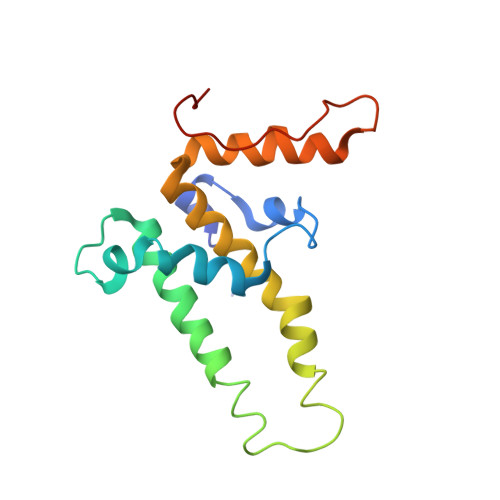Global Structural Changes in Hepatitis B Virus Capsids Induced by the Assembly Effector HAP1.
Bourne, C.R., Finn, M.G., Zlotnick, A.(2006) J Virol 80: 11055-11061
- PubMed: 16943288
- DOI: https://doi.org/10.1128/JVI.00933-06
- Primary Citation of Related Structures:
2G33, 2G34 - PubMed Abstract:
Hepatitis B virus (HBV) is a leading cause of liver disease and hepatocellular carcinoma; over 400 million people are chronically infected with HBV. Specific anti-HBV treatments, like most antivirals, target enzymes that are similar to host proteins. Virus capsid protein has no human homolog, making its assembly a promising but undeveloped therapeutic target. HAP1 [methyl 4-(2-chloro-4-fluorophenyl)-6-methyl-2-(pyridin-2-yl)-1,4-dihydropyrimidine-5-carboxylate], a heteroaryldihydropyrimidine, is a potent HBV capsid assembly activator and misdirector. Knowledge of the structural basis for this activity would directly benefit the development of capsid-targeting therapeutic strategies. This report details the crystal structures of icosahedral HBV capsids with and without HAP1. We show that HAP1 leads to global structural changes by movements of subunits as connected rigid bodies. The observed movements cause the fivefold vertices to protrude from the liganded capsid, the threefold vertices to open, and the quasi-sixfold vertices to flatten, explaining the effects of HAP1 on assembled capsids and on the assembly process. We have identified a likely HAP1-binding site that bridges elements of secondary structure within a capsid-bound monomer, offering explanation for assembly activation. This site also interferes with interactions between capsid proteins, leading to quaternary changes and presumably assembly misdirection. These results demonstrate the plasticity of HBV capsids and the molecular basis for a tenable antiviral strategy.
Organizational Affiliation:
Department of Biochemistry and Molecular Biology, University of Oklahoma Health Sciences Center, 975 E. 10th Street, Oklahoma City, Oklahoma 73104, USA.














